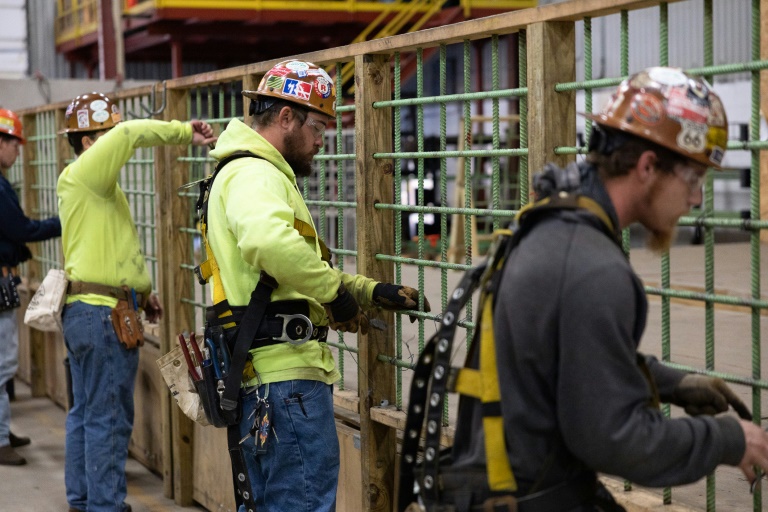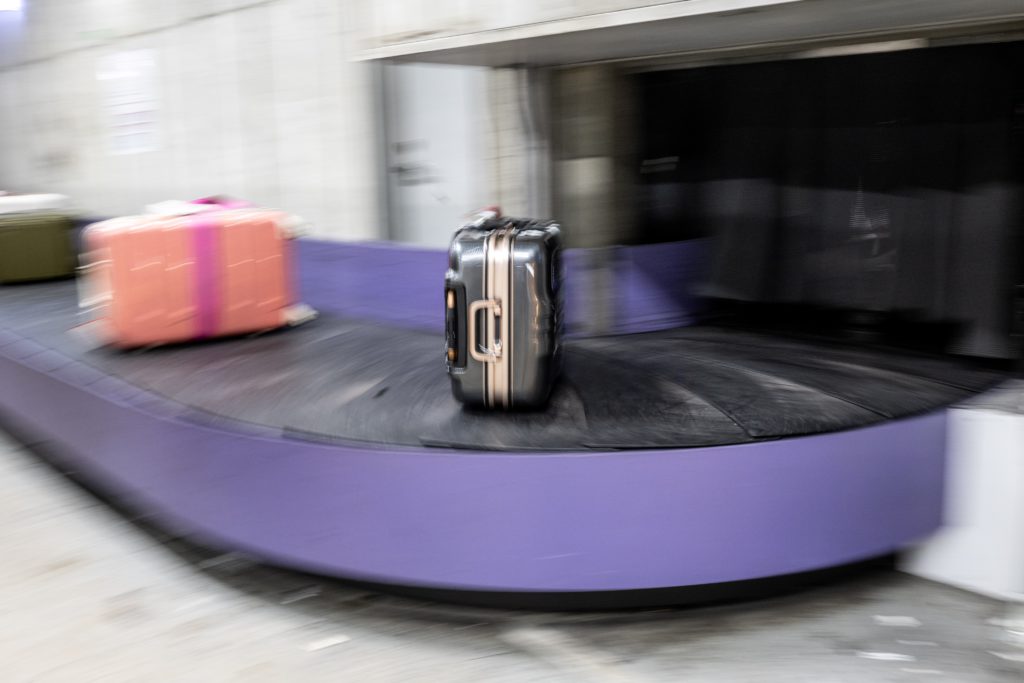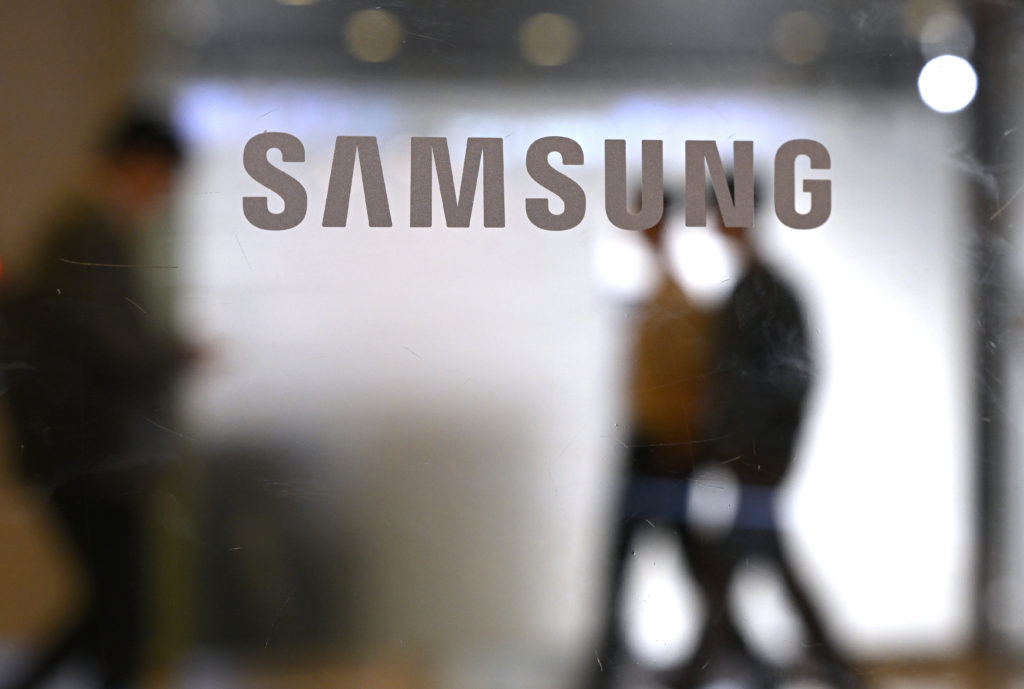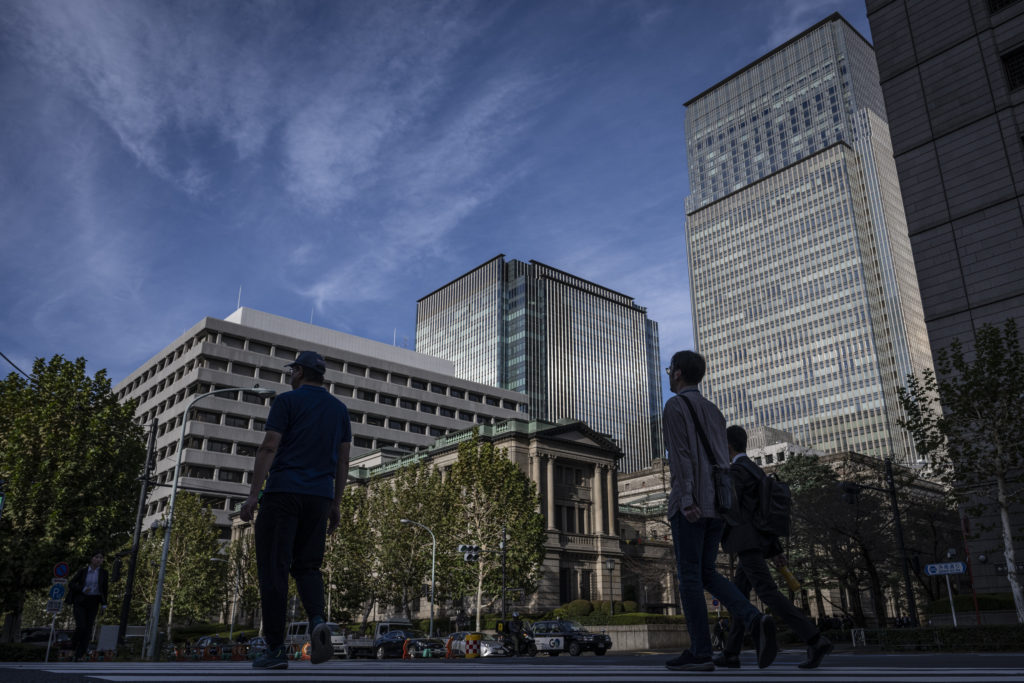Zachary Williams (C), who is doing an apprenticeship to become a metalworker, says he will support Republicans in the upcoming midterm elections
In a US workshop echoing with the sound of steel girders clanging into each other, Zachary Williams is learning a trade.
At this vocational training center in Ohio, the red-bearded apprentice is eyeing work that will be generated by two huge factories under construction in this one-time bellwether state that swung to the right as long-time heavy industries rusted out.
But in next week’s midterm elections, Williams is hoping for a change in leadership, even though President Joe Biden’s Democrats helped engineer the building of Intel’s chip plant and the Honda e-vehicle battery factory in the state.
The 30-year-old Williams — who is learning to work with rebar, the steel used to strengthen reinforced concrete — is very worried about inflation, which is at a 40-year high in the United States.
And he hopes the Republicans will win control of Congress and “get it back down for us to where the working class can be able to afford gasoline prices.”
Addressing the inflation fears that have dominated the campaign ahead of November 8, Biden has pressed the message that billions of dollars in investment approved by his administration and the Democratic-controlled Congress will invigorate the US manufacturing sector.
Biden, who himself grew up in a working-class town, is revisiting one of the themes of his winning 2020 presidential run as he travels often to Ohio and works to reconnect with white blue-collar workers embittered over globalization’s elimination of good-paying jobs.
But in Ohio, where Donald Trump prevailed in the last two presidential elections, inflation and that feeling of disenchantment among workers is making things hard for Biden and his party.
– ‘Struggling to survive’ –
“We need to bring some people in that can help the poor class or the working class, because a lot of people out there are struggling to survive,” Williams said, amid the whine of power tools.
Elsewhere in the workshop, Matthew Atha points a blow torch at a piece of metal.
“Put that oxygen down,” says Simon Denby, an instructor at this course run by a labor union near Dayton. “Keep going, keep going.”
Atha, 54, has watched industry collapse in the American Rust Belt but says he has hope — he believes Biden has worked to boost manufacturing with a huge infrastructure investment bill.
“It may win back the working class, but they (Democrats) are going to have to work for it. It’s not something that we’re going to hand to them,” said Atha.
“We don’t want false hope,” he added. “But over the last few decades, we’ve seen the working class failed many times by both parties.”
Indeed, as capital migrated to Mexico and other low-wage countries, Ohio lost a quarter of its manufacturing jobs from 2000 to 2007.
– Lost identity –
In Middletown, located about an hour’s drive south of Dayton, a huge steelworks managed to stay operational, but “we lost a part of who we are” with all the other changes with the decline of industry, said Mayor Nicole Condrey.
“The steel industry went through some turmoil. Their headquarters moved out of Middletown,” said Condrey.
“It kind of left us without that same identity. And so we’re still kind of trudging through to find what that next generation of identity is in Middletown.”
A lot of people here support “Hillbilly Elegy” author J.D. Vance, the Trump-backed US Senate candidate who grew up in Middletown, she said.
Tim Burga, head of the Ohio branch of the AFL-CIO, the main US labor federation, said he’s betting on a shift in manufacturing to more high-tech jobs and a clean energy economy.
“And we’re transitioning out of the old label of being the Rust Belt. So signs are encouraging. Signs are good,” he said in his office overlooking the state capital Columbus.
– ‘Trying real hard’ –
But on the ground, local trade unions are struggling to reach voters and get the message out that the Democrats are working for them.
David Cox — the business agent for Ironworkers Local Union 290, which manages the vocational training program — is trying to push Biden’s pitch.
“We’re trying real hard, we’re trying real hard,” he says.
But one of the problems with that push is the cultural divide, he explains.
“Whether it be guns or God or abortions or whatever the case may be, there’s a whole lot of them in our membership that typically don’t want to vote for Democrats,” Cox says.
Tim Ryan, the Democrat battling Vance for the Senate seat, is adopting a novel strategy, saying boldly that he does not want Biden to serve a second term and isn’t giving him a free pass on sky-high inflation.
Ryan’s campaign posters have a lot of red, the color of the Republican Party.
And his slogan? “Tim Ryan/Workers first.”











